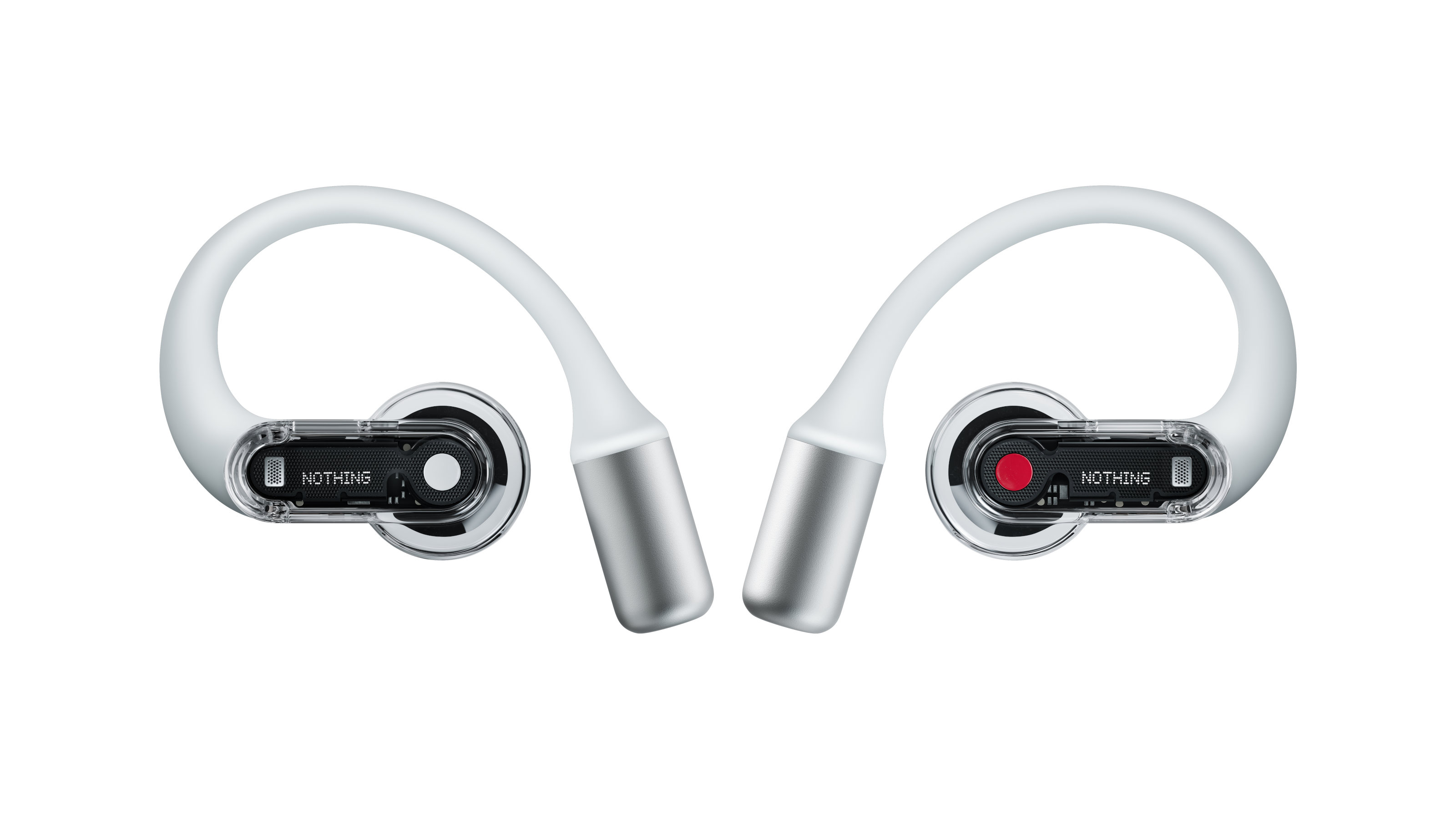All-new Nothing Ear (open) offers up a different kind of listening experience
If you find traditional earbuds cancel out too much of the outside world, Nothing has got you covered. We get down with the company’s new Ear (open) to experience this transparent new soundscape
It seems like only yesterday that Nothing was considered a new kid on the block in the tech space. Several offbeat but excellent smartphones later, as well as a collection of well received earbuds, the London-headquartered company has firmly established itself as a key alternative to the tech industry’s various established players.
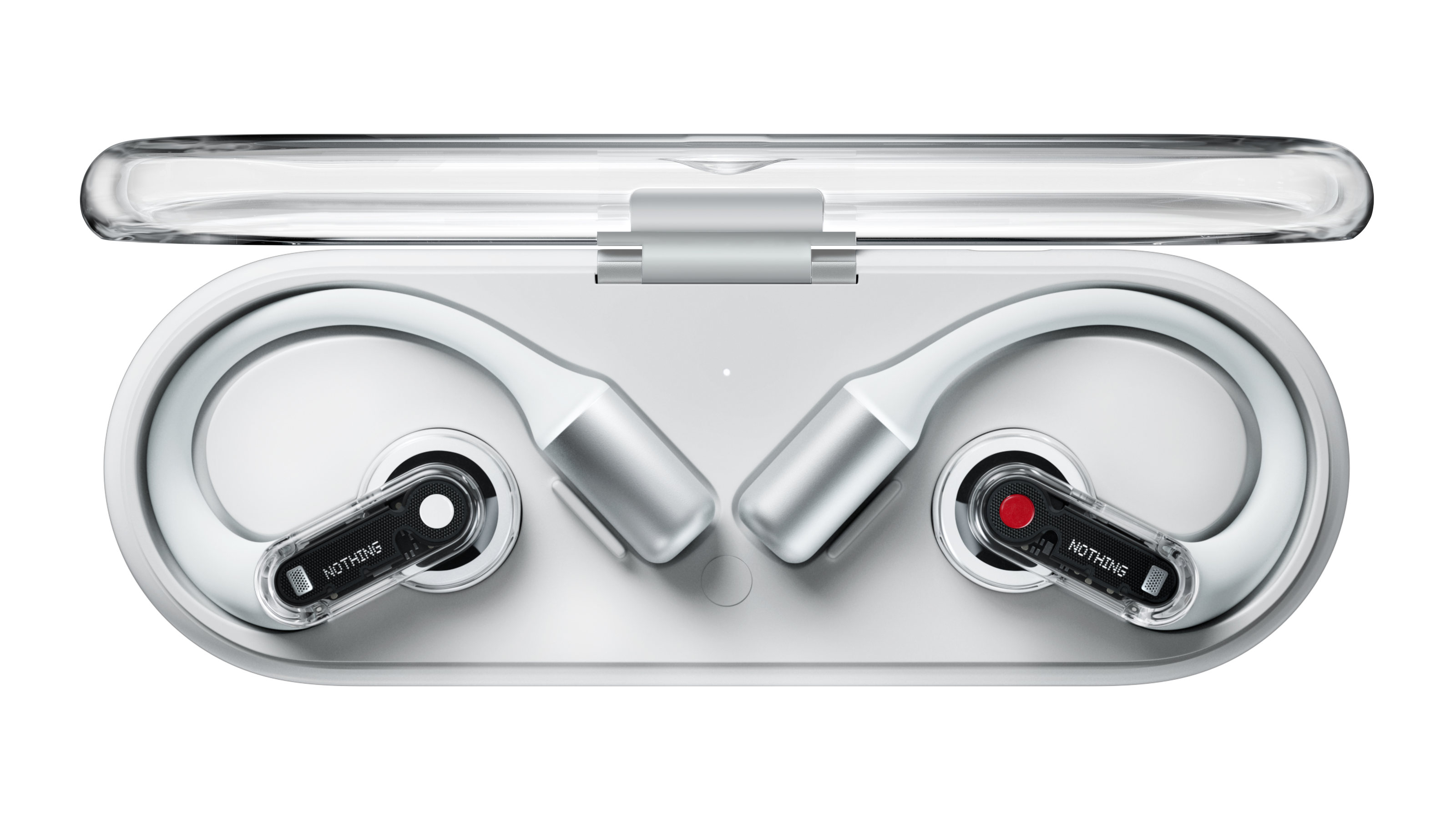
Nothing Ear (open) in charge case
Next up in the Nothing ecosystem is this, the all-new Nothing Ear (open), an over-ear headphone design that does the exact opposite of snug-fitting, noise-cancelling earbuds. As the name suggests, Ear (open) is about transparency, but not the digitally filtered and processed kind. The device loops over each ear for stability, with speakers that hover just millimetres from your eardrum.

Nothing Ear (open) feels effortlessly light
Although it’s hard to discern with the naked eye, there’s a ‘Sound Seal System’ at work here, along with very directional speakers so as to minimise sound leakage for those around you. Those same people will relish not having to wave their arms around to attract your attention. Pinch controls on the body of the earpieces handles call answering, play/pause and volume adjustment.
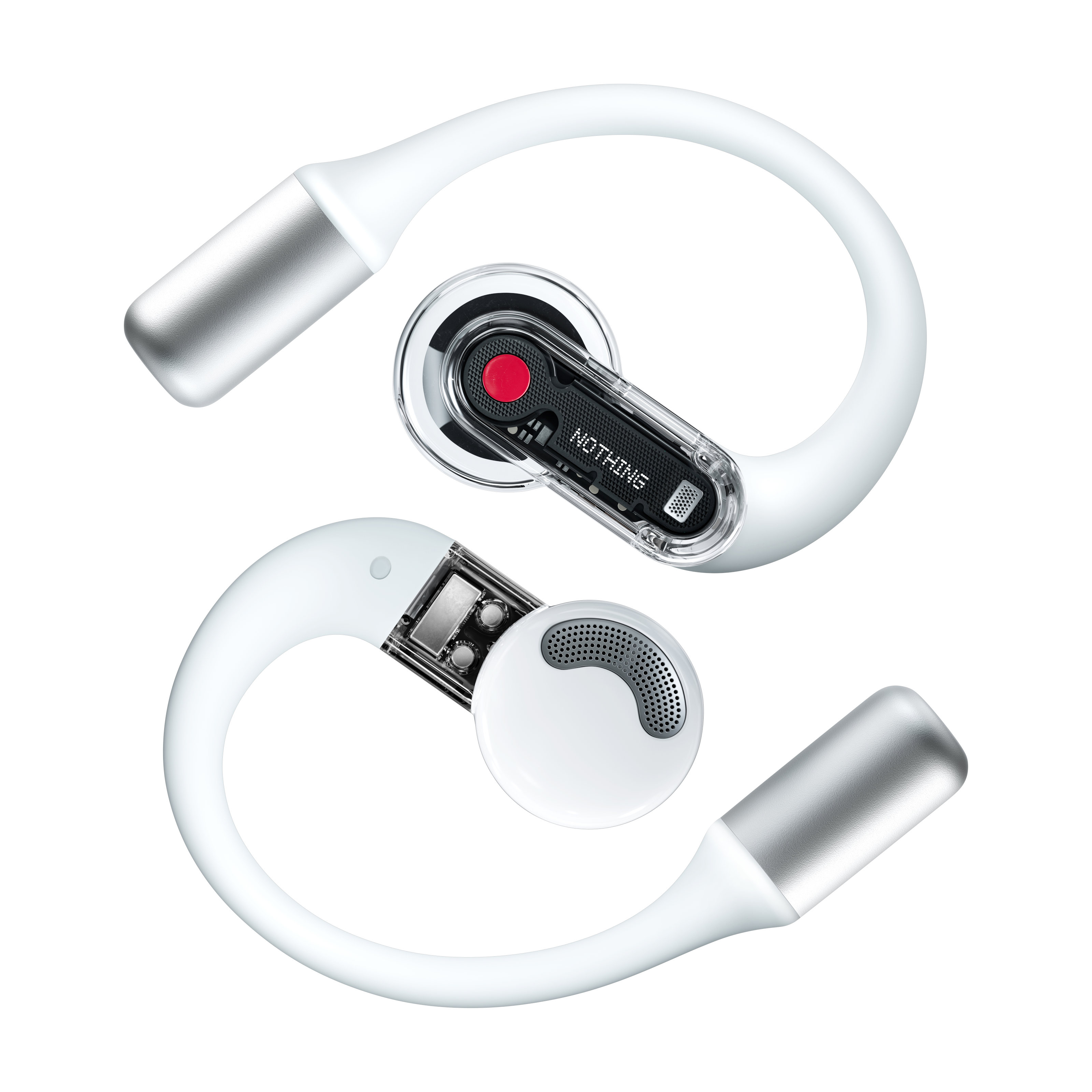
Nothing Ear (open)
Ear (open) is positioned as a more engaged listening experience, something that works especially well when cycling or running, and for things like podcasts and audio books, where subtle nuances of production or instrumentation aren’t quite so important. What makes the new device even more attractive is the signature Nothing design, starting with the lozenge-like charge case.
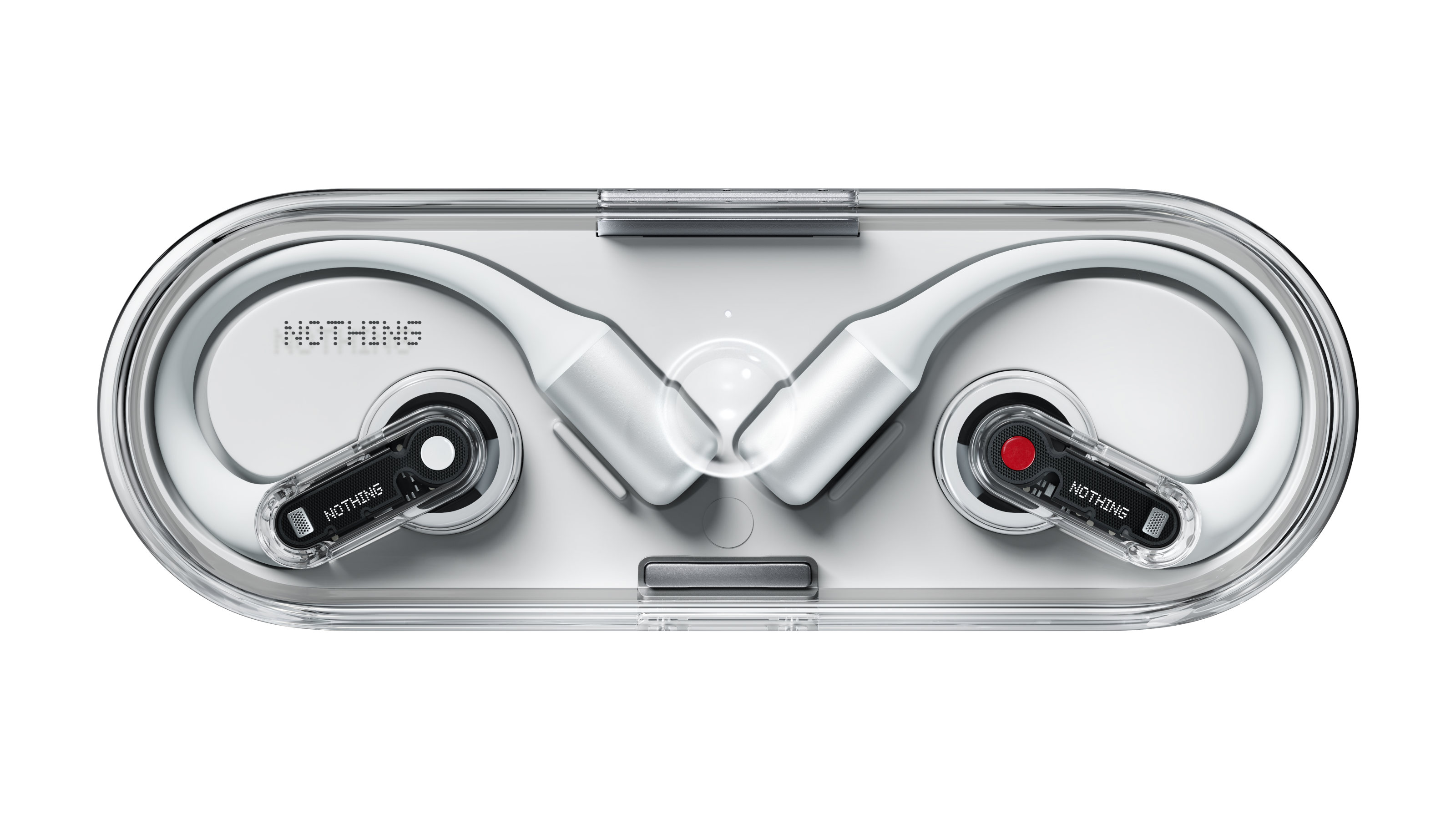
Nothing Ear (open) in the charge case
Ultra slim, it still packs a bigger battery than usual to add up a total listening time of 30 hours. On their own, the buds themselves should be good for up to 8 hours of audio. The earpieces themselves retain Nothing’s transparent aesthetic and are neatly packaged in the case to make removal and stowage incredibly straightforward.
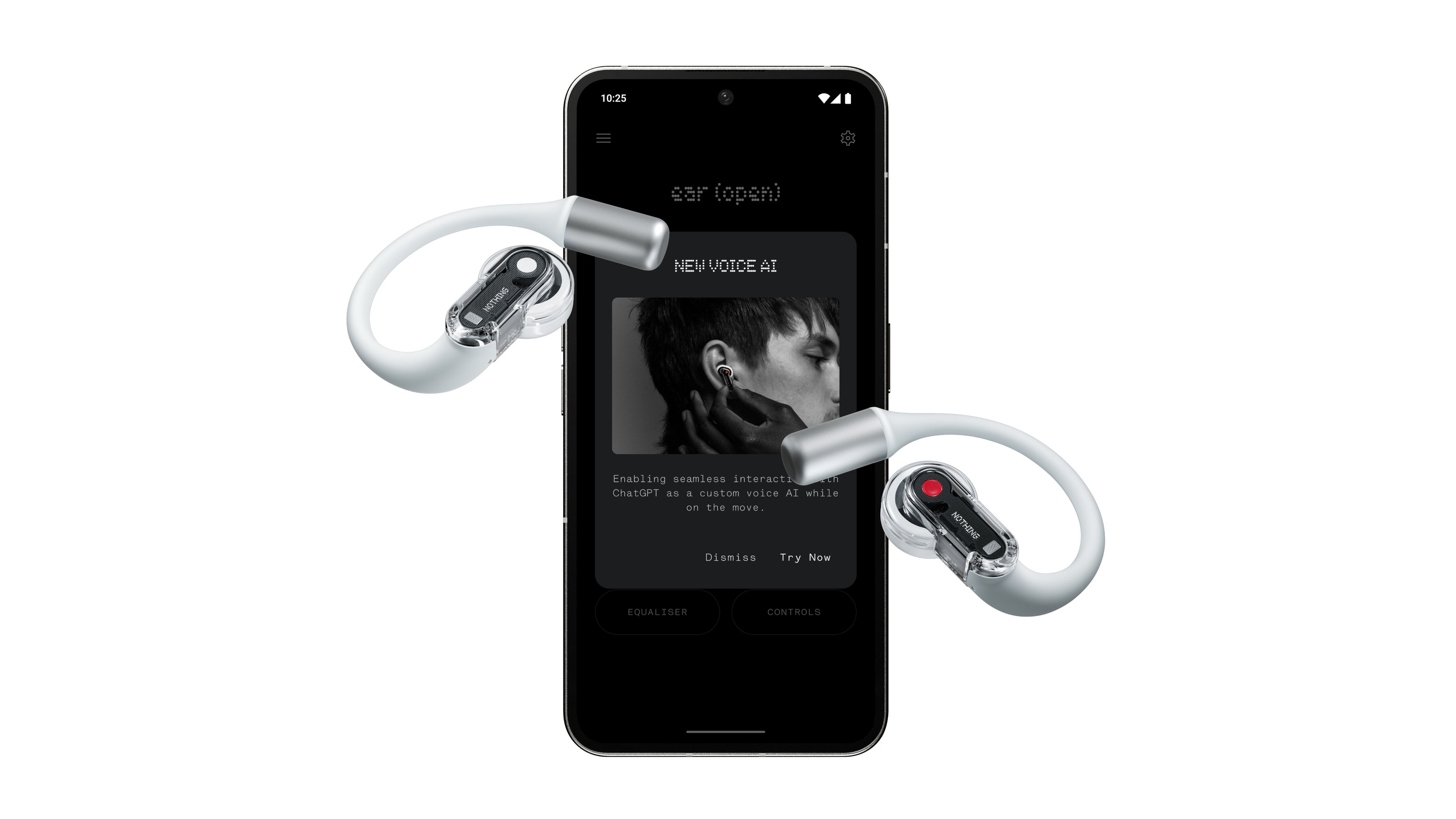
Nothing Ear (open) have ChatGPT integration
Other features include being able to integrate ChatGPT into your Nothing ecosystem (phone and earbuds) as an alternative to Google Assistance, while the Nothing X app also offers a more advanced sound equaliser function, as well as a bass enhance function. Voice calls are handled by two integrated microphones, carefully placed to avoid excessive wind noise. A game mode reduces lag, while Ear (open) can also be connected over Bluetooth to two devices simultaneously.

Nothing Ear (open): exploded view
That carefully balanced system, as well as the lightness of the buds themselves (8.1g each), make Ear (open) almost imperceptible when worn. The result are headphones that keep you cued in as to what’s going on around you. It’s very much a personal choice, of course, but anyone who leaves their earbuds firmly installed even once the music has stopped will be familiar with just how much real life is blocked out.
Wallpaper* Newsletter
Receive our daily digest of inspiration, escapism and design stories from around the world direct to your inbox.
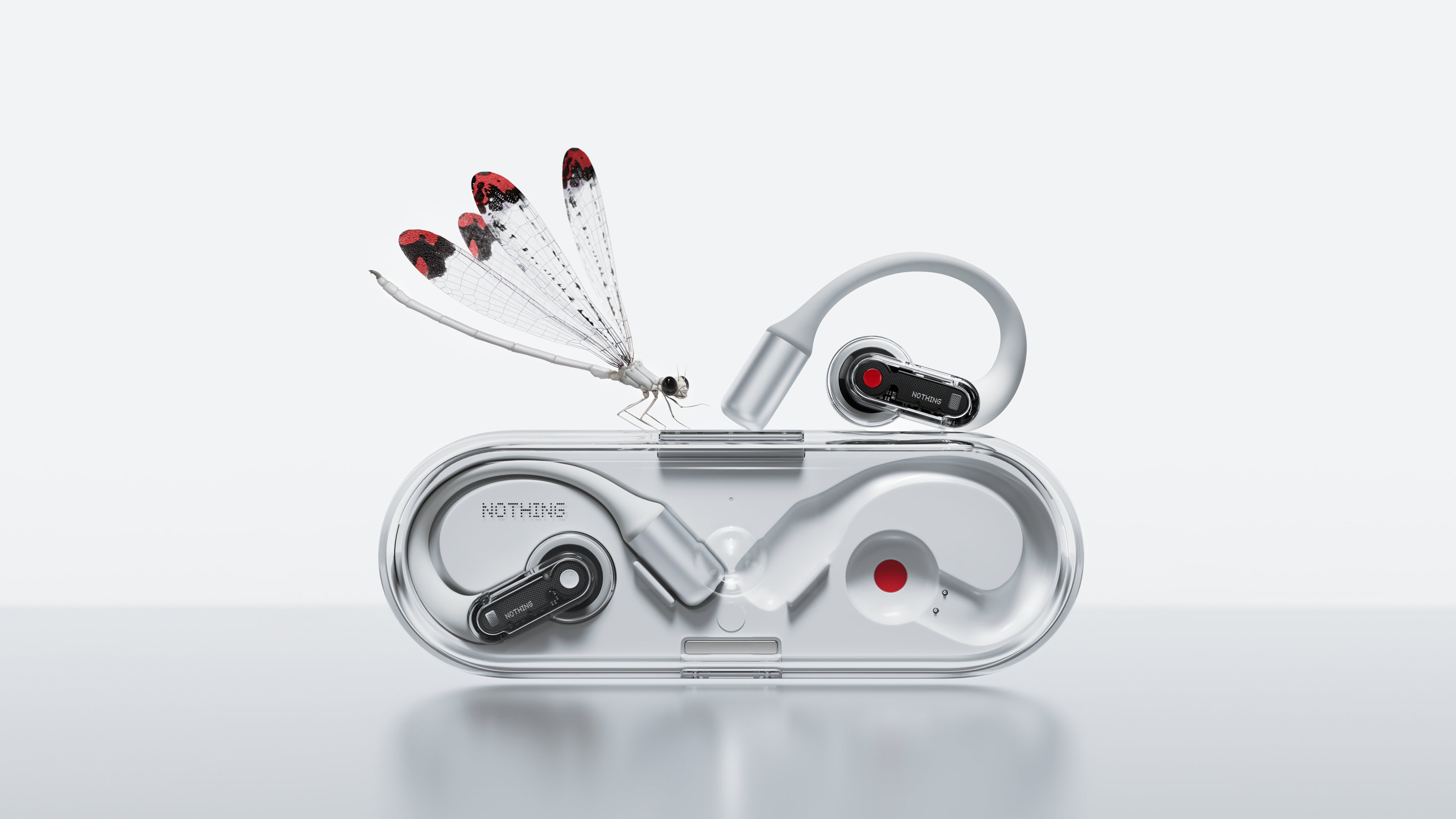
Nothing Ear (open)
Nothing Ear (open), $149 USD / £129 GBP / €149 EUR, Nothing.audio, @Nothing
Jonathan Bell has written for Wallpaper* magazine since 1999, covering everything from architecture and transport design to books, tech and graphic design. He is now the magazine’s Transport and Technology Editor. Jonathan has written and edited 15 books, including Concept Car Design, 21st Century House, and The New Modern House. He is also the host of Wallpaper’s first podcast.
-
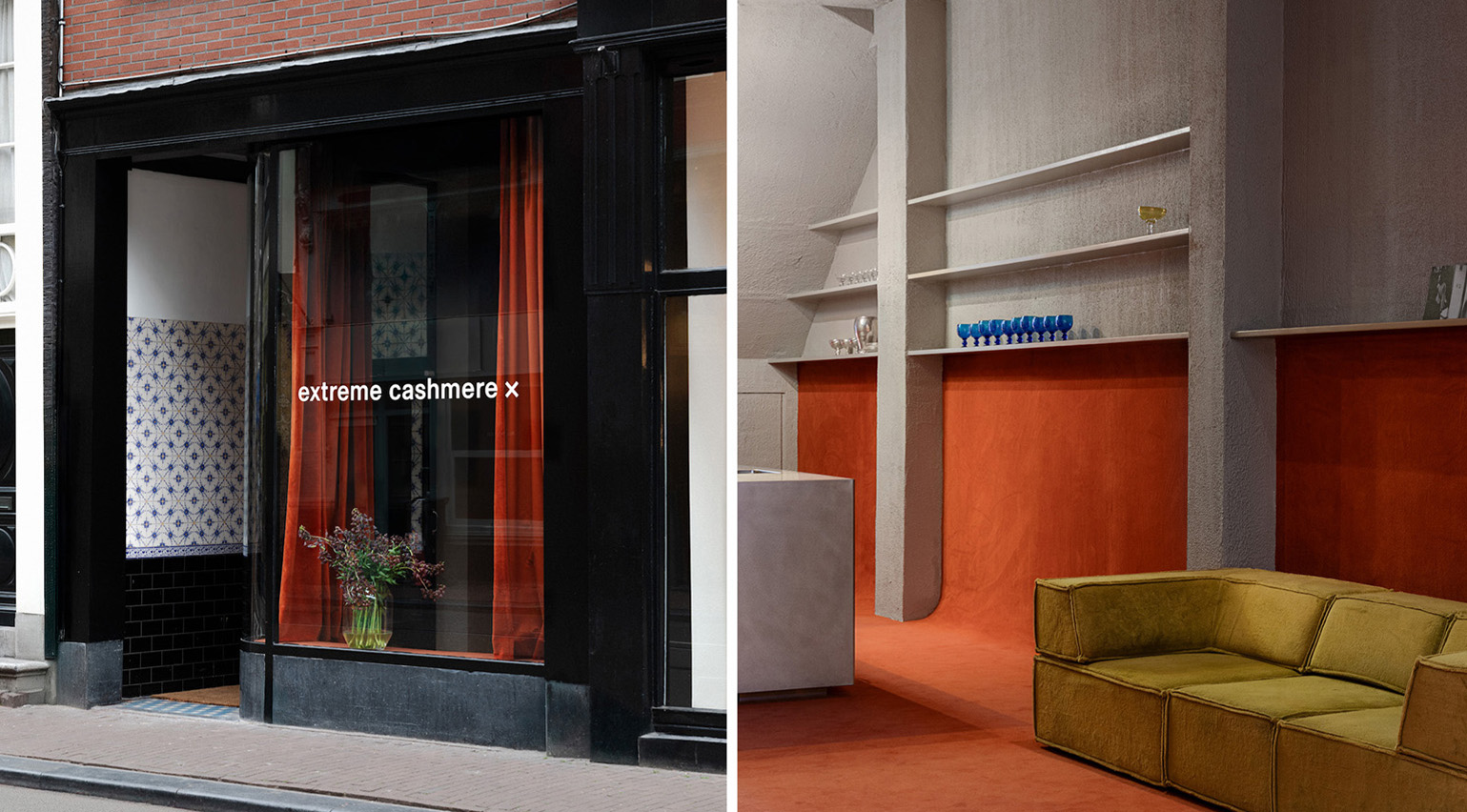 Extreme Cashmere reimagines retail with its new Amsterdam store: ‘You want to take your shoes off and stay’
Extreme Cashmere reimagines retail with its new Amsterdam store: ‘You want to take your shoes off and stay’Wallpaper* takes a tour of Extreme Cashmere’s new Amsterdam store, a space which reflects the label’s famed hospitality and unconventional approach to knitwear
By Jack Moss
-
 Titanium watches are strong, light and enduring: here are some of the best
Titanium watches are strong, light and enduring: here are some of the bestBrands including Bremont, Christopher Ward and Grand Seiko are exploring the possibilities of titanium watches
By Chris Hall
-
 Warp Records announces its first event in over a decade at the Barbican
Warp Records announces its first event in over a decade at the Barbican‘A Warp Happening,' landing 14 June, is guaranteed to be an epic day out
By Tianna Williams
-
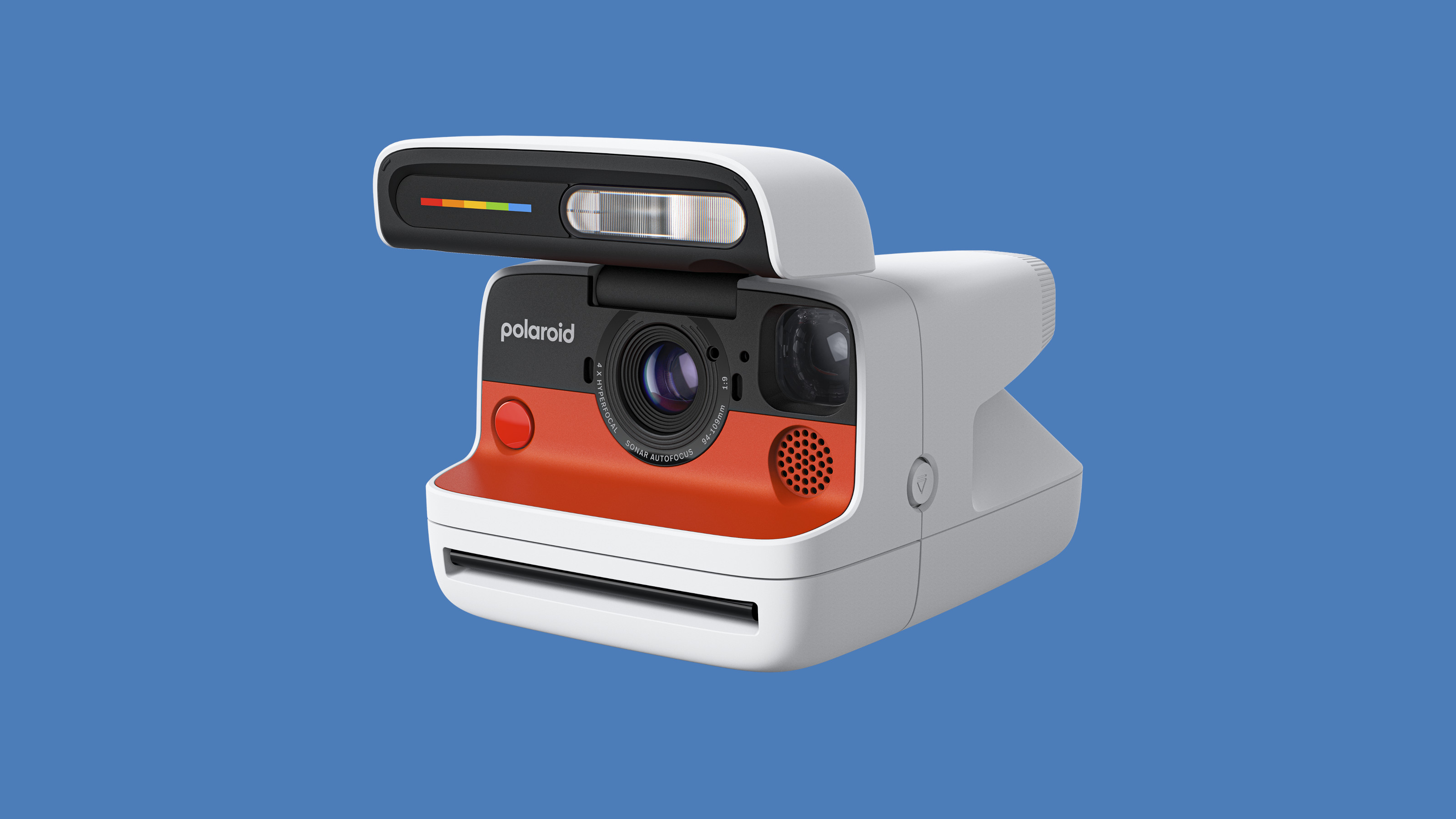 The new Polaroid Flip unfolds to bring you pin-sharp instant photography
The new Polaroid Flip unfolds to bring you pin-sharp instant photographyPolaroid announces the Flip, an instant camera that blends its evergreen film technology with better results and more control
By Jonathan Bell
-
 Could putting pen to reMarkable’s Paper Pro tablet make you more creative and less stressed?
Could putting pen to reMarkable’s Paper Pro tablet make you more creative and less stressed?Design Museum director Tim Marlow extols the power of ‘scribbling’, and is backed up by new research from reMarkable on the benefits of its paper tablet
By Simon Mills
-
 Clicks creates keyboard cases for iPhones – now they're also available for three Android flagships
Clicks creates keyboard cases for iPhones – now they're also available for three Android flagshipsSmartphones get a new lease of life with Clicks, which brings a Blackberry-style keyboard to today’s cutting-edge Apple and Android devices
By Jonathan Bell
-
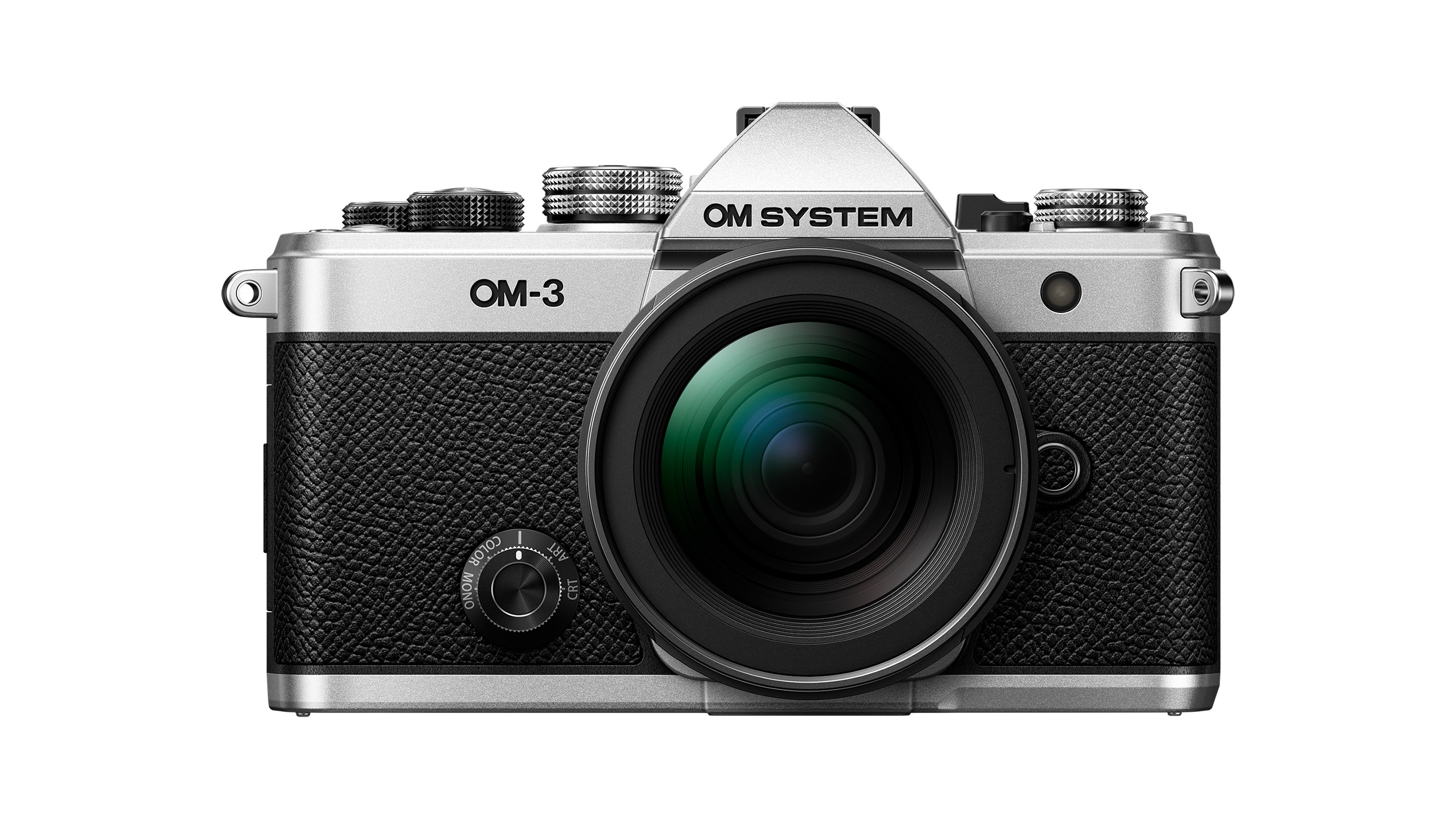 The OM System OM-3 camera blends heritage design with cutting-edge technology
The OM System OM-3 camera blends heritage design with cutting-edge technologyThe OM-3 from OM System is the newest must-have mirrorless camera design, classically styled and comprehensively equipped to create the ultimate contemporary digital camera
By Jonathan Bell
-
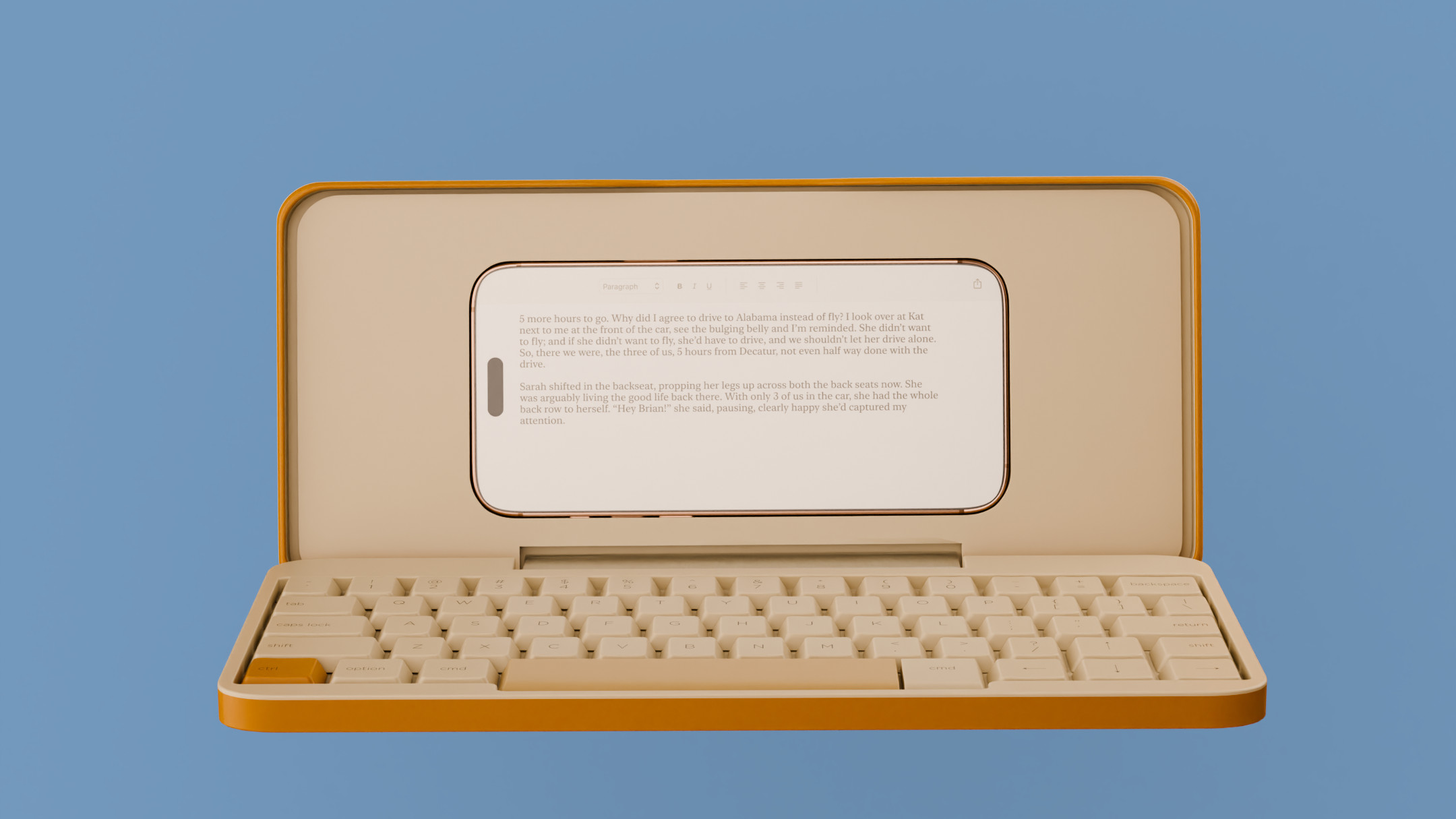 Type without the tyranny of distractions: eight new ways to get the words out
Type without the tyranny of distractions: eight new ways to get the words outLooking for a way to divert you from doom-scrolling? This selection of eight distraction-free typing devices will keep you offline and away from the socials to help you meet that deadline
By Jonathan Bell
-
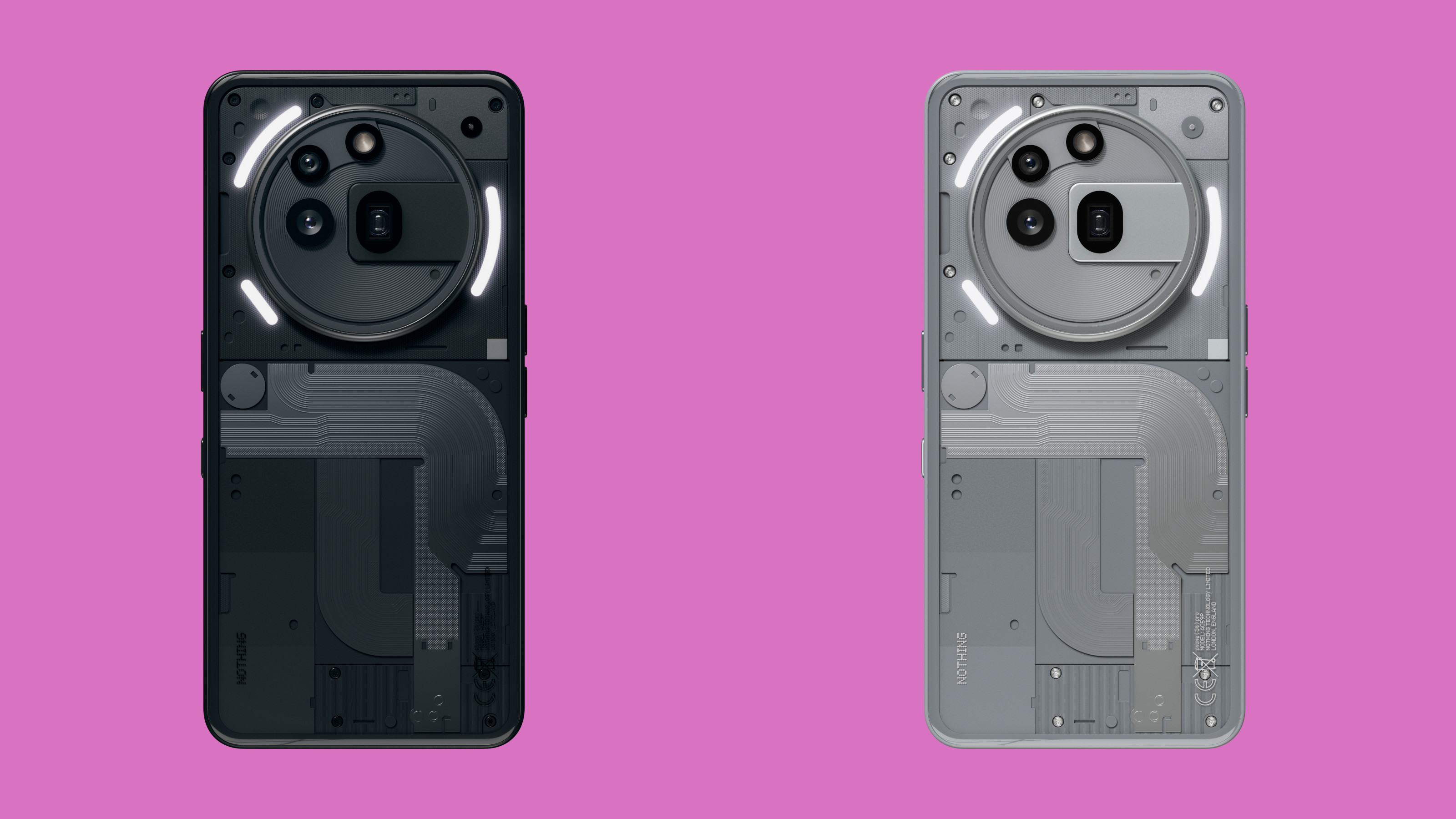 Hands on with the new Phone (3a) Series, Nothing's smartest smartphones to date
Hands on with the new Phone (3a) Series, Nothing's smartest smartphones to dateNothing has launched the Phone (3a) Pro and (3a), featured boosted camera power and the ability to deploy AI for good
By Jonathan Bell
-
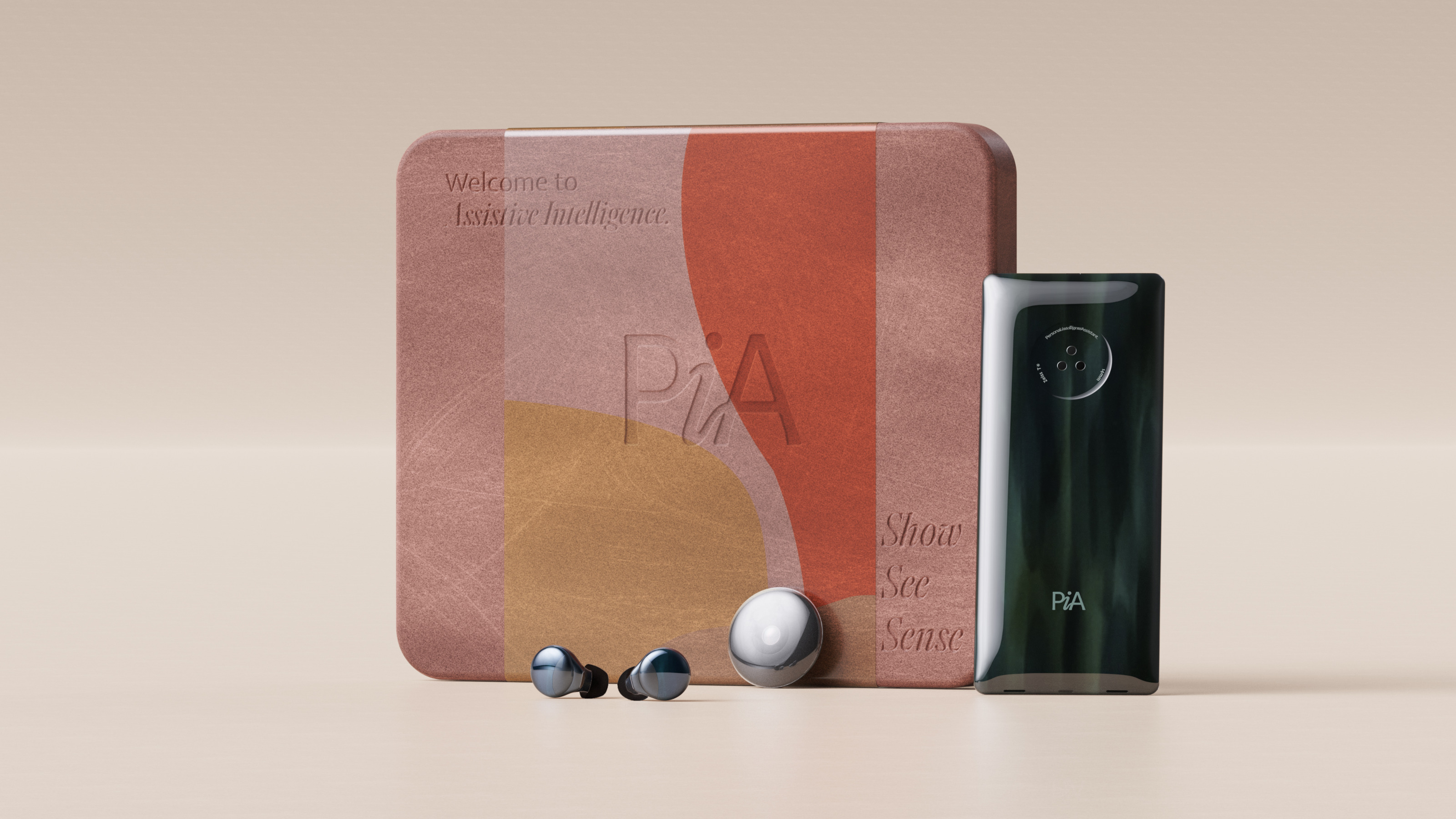 Layer conceptualises a next-gen AI-powered device: introducing the PiA
Layer conceptualises a next-gen AI-powered device: introducing the PiAPiA, the Personal Intelligent Assistant, is a conceptual vision of how AI might evolve to dovetail with familiar devices and form factors
By Jonathan Bell
-
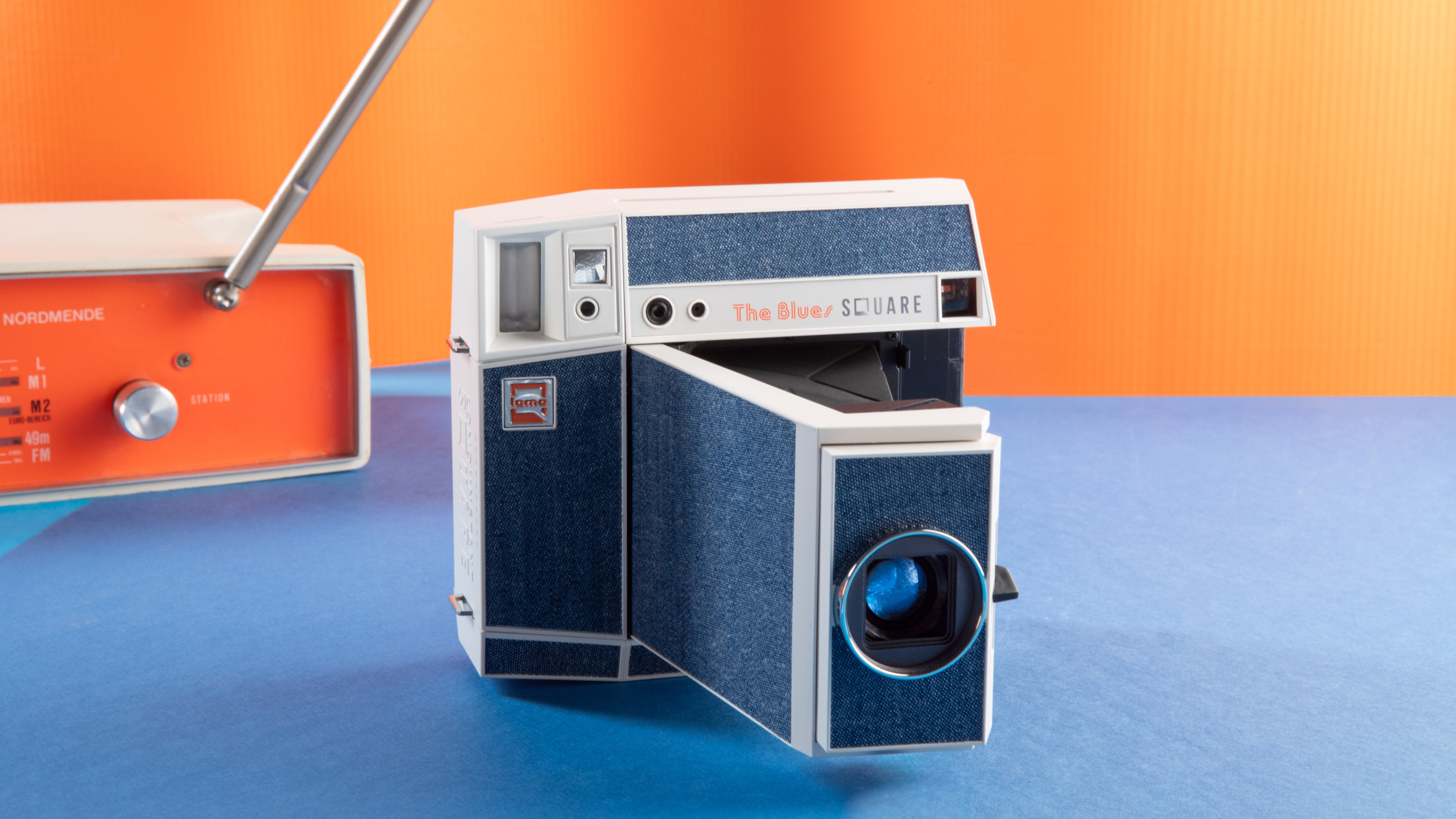 Point, shoot and process with Lomography’s two new colourful Instax camera editions
Point, shoot and process with Lomography’s two new colourful Instax camera editionsWith the Pemberley and The Blues editions, the Lomo’Instant Square Glass camera provides stylish and pocketable analogue photography
By Jonathan Bell
